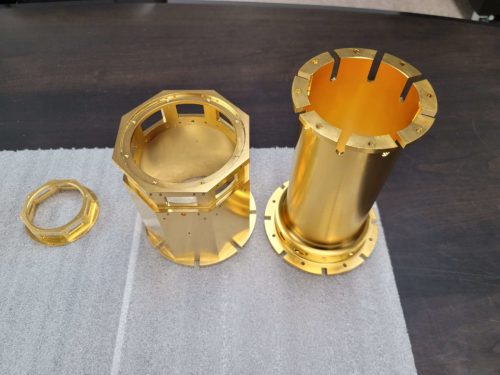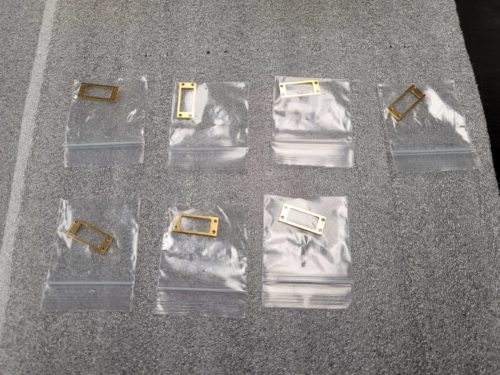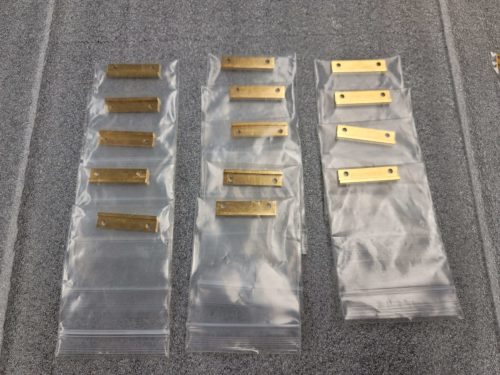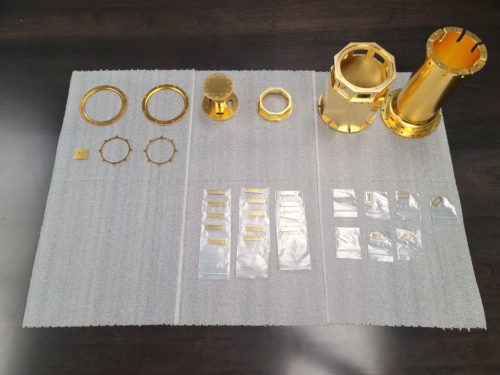If you caught our newsletter last month, you may have seen us mention our recent work with the Illinois Quantum Information Science and Technology Center (IQUIST) at the University of Illinois at Urbana-Champaign to build a quantum processor.
We’re fortunate enough to work on some really cool prototypes here at our machine shop in Illinois. . . but it’s not every day we get to help build a quantum computer. We’re excited to share more about this unique project.
About the Quantum Computer Project
PhD student Mari Cieszynski, our contact for the project, is the recent winner of a prestigious National Science Foundation (NSF) Graduate Research Fellowship. The award funds her stipend to work on a project at the University of Illinois which consists of building a quantum processor that uses trapped atomic ionic quantum bits (qubits).
Here are some impressive stats about the project:
- The ion trap processor is a key part of the NSF Quantum Leap Challenge Institute for Hybrid Quantum Architectures and Networks (QLCI–HQAN)
- Mari’s PhD advisor, Brian DeMarco, is the Director of HQAN, which is just one of three QLCIs supported by the NSF under the 2018 National Quantum Initiative Act
- HQAN’s goal is to advance modular architectures for quantum computing that interconnect different qubit platforms
- The Department of Energy Q-NEXT National Quantum Initiative center also supports the ion trap testbed to explore quantum repeater technologies, which will play a key role in the future quantum internet
- The ion trap testbed is a collaborative research project with MIT Lincoln Laboratory, which is providing and developing ion trap chips with integrated photonics technology (we are also making parts for this project!)
In other words. . . the project is a pretty big deal, backed by some heavy hitters in the field of quantum computing.
When Mari approached Wagner Machine about machining the parts she had designed, we were immediately all in.
Wagner Machine’s Contributions to the Project
Mari designed a series of parts for the support infrastructure for the ion trap processor. The parts contribute to a variety of functions, including transferring electronic signals, mounting, and shielding the processor from the environment.
We machined the parts from OFHC copper and they were electropolished and gold-plated for excellent thermal and electrical conductivity. During operation, these parts will be in an ultra-high vacuum at temperatures approaching absolute zero, so they must be able to withstand extreme environmental conditions.
As with many of our prototype projects, this leveraged multiple in-house processes including 3-axis milling, 5-axis milling, and turning. We also worked with our established vendors to take care of the electropolishing and gold plating.
Here’s a look at the final parts:
Mari and her team were a lot of fun to work with because they’re so passionate about what they’re doing. Their enthusiasm resonated with us, because we love what we do, too.
If you’re looking for a machine shop that can deliver complex machined parts for your next project—quantum computing or otherwise—that’s what we’re here for. Request a quote and let’s bring your project to life.




